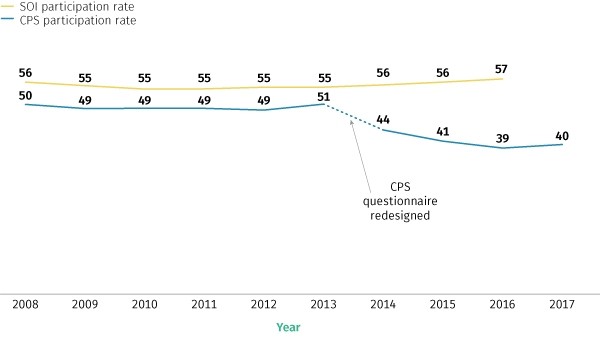Retirement Plan Participation Continues to Increase
Nearly Two-Thirds of Workers Participate in an Employer Plan
Washington, DC; August 5, 2019—American workers’ participation in employer-sponsored retirement plans is significantly higher than suggested by the most commonly cited statistics, with nearly two-thirds of workers between ages 26 and 64 participating in such plans, either directly or through a spouse, according to “Who Participates in Retirement Plans, 2016,” a new study by the Investment Company Institute (ICI).
The participation rate rises to more than three-quarters if younger and lower-income workers—those who are the least likely to be able to or want to save for retirement—are removed from the analysis (page 23).
“By the time they retire, the vast majority of American workers will accumulate resources in employer plans,” said ICI Senior Economic Adviser Peter Brady. “This is not well understood for two reasons. First, participation is often understated in household surveys, which are used to study participation. Second, many younger and lower-income workers who are not participating in retirement plans today will do so later in their careers.”
Focusing on the Overall Participation Rate Can Be Misleading
ICI’s report shows that the overall participation rate—which is a snapshot of how many workers are taking advantage of an employer plan at a single point in time—can misrepresent retirement preparedness. The reason is simple: just because some workers aren’t participating in a plan today, doesn’t mean they won’t participate later in life.
The study explains that younger and lower-income workers are the least likely to want to save for retirement, and thus less likely to search for an employer who offers a retirement plan or participate in a plan if given the choice (pages 6–8, 19). This is for a variety of reasons:
- Younger workers are typically focused on saving for goals other than retirement, such as saving to buy a house, pay for education, or start a family. They may rationally choose to delay saving for retirement until they’re older, when earnings are typically higher and they have taken care of other priorities.
- Workers who remain low income throughout their careers may rationally choose not to save for retirement at any age, as it would reduce the resources available to address more immediate financial needs, and Social Security benefits alone will replace a high percentage of their earnings (pages 6–8, 19).
Retirement Plan Participation Increases with Age
Consistent with expectations, the study shows participation in employer plans increases as workers get older (page 15). For example, as shown in the figure below, 55 percent of workers between the ages of 26 to 34 either participated in an employer plan or had a spouse who participated. This rate increases to 69 percent for workers who were 45 to 64 years old.
Older Workers Are More Likely to Participate in a Retirement Plan
Percentage of taxpayers aged 26 to 64 with a Form W-2 who are active participants in a retirement plan or who have a spouse who is an active participant, by age, 2016

Source: IRS Statistics of Income Division
Earnings Plays a Role in Retirement Plan Participation
ICI’s paper also illustrates that higher-earning workers are more likely to participate in an employer plan (page 16). For example, among workers between 26 and 64 years old in 2016, the probability that an employee participated in a retirement plan at his/her workplace spanned the following range:
- 22 percent for those who earned less than $20,000
- 67 percent for those who earned $40,000 to $50,000
- 85 percent for those who earned $100,000 or more
Data Used in ICI’s Analysis
The study uses tax data published by the Internal Revenue Service (IRS) Statistics of Income Division (SOI). The tabulations include data on all taxpayers who were wage and salary workers in 2016. ICI’s analysis focuses on working taxpayers between the ages of 26 and 64 (page 4).
The tax data show that more workers participate in employer plans than is typically reported (page 5). ICI’s study compares the results from the SOI data with the most commonly cited statistics on retirement plan participation rate, which come from the Annual Social and Economic Supplement (ASEC) to the Current Population Survey (CPS). As illustrated in the figure below, the CPS has consistently understated retirement plan participation, and the differences between the two data sources increased following a recent revision to the ASEC’s questionnaire.
CPS Participation Rate Lower Even Before Recent Drop
Percentage of workers aged 26 to 64 who participated in a retirement plan

Sources: IRS Statistics of Income Division and Investment Company Institute tabulations of Current Population Surveys
